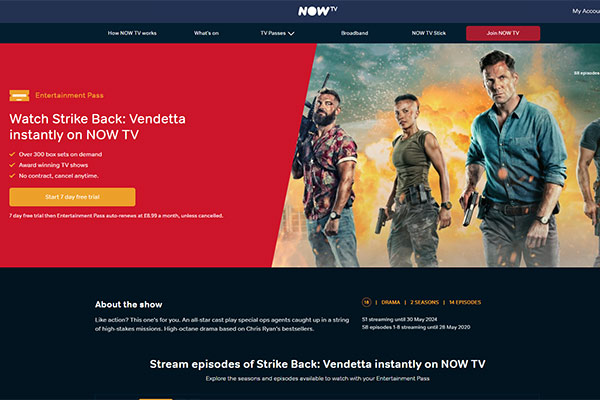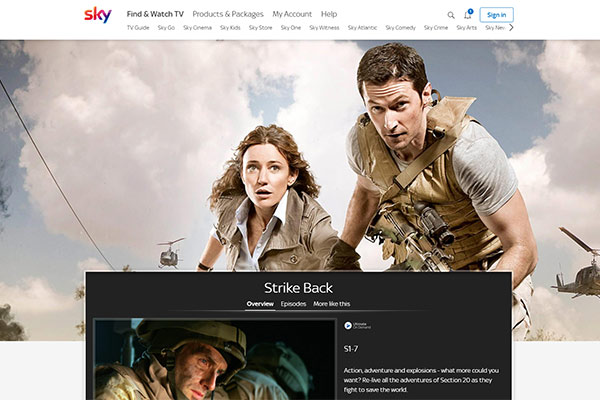Strike Back: Vendetta Season 8 2020 – The Insider’s View
Strike Back: the Insider’s View
There is even a narrative arc to the behind the scenes story of Strike Back.
The show can be considered in two halves, each with a distinctive style and reach.
The show started in the UK, as Chris Ryan’s Strike Back (this mismatch in season numbering between UK and US markets has persisted).
The show was a big hit for Sky, but the second series in the UK, Project Dawn, marked Strike Back’s rebirth and its debut in the US. The show was now an international co-production between Sky (and Leftbank Pictures) and Cinemax, HBO’s premium cable network. The series set-up was substantially changed. Michael Stonebridge (played by Philip Winchester) with Sullivan Stapleton as Damien Scott were the two main characters, and the show was very focussed on action, and a bantering, buddy-movie character dynamic between the two stars.
From series 6, new and more conflicted and complex characters entered the scene, expanding the dramatic range and depth of the show. No longer two-men-against-the-world, Strike Back’s heroes were now a team, including female characters, a big tech angle, and a more rewarding set of personal stories to tell.
Putting the Pieces Together
Strike Back is not cheap to make, but in John’s words it “punches above its weight” and its budget. The show may not have the resources of a Hollywood or Netflix blockbuster, but it has consistently used complex multi-camera shoots (on location for many series), top quality visual effects and death-defying physical action to help deliver a narrative that audiences buy into.
Speaking on the Sit Rep podcast, John described his role in helping construct the centrepiece action sequence in the final episode.
“You’re putting big blocks in place to begin with – this is the bit of story that we need that goes from here to there, and then you start analysing and thinking, what can I do to enhance bits of it?”
It’s a long process. After a four-day shoot John could start putting together a compelling sequence from many hours of footage.
“It took seven days for me to reach my first assembly,” explains John.
A single moment of action on screen – Novin being shot during a fire fight, for example – also has to tell a bigger story: her comrades are looking for an escape route and have their own concerns; the audience doesn’t expect their hero to take a bullet, and these characters care about each other.
John explains: “You’re digging through, most of the time three cameras, running for three or four minutes each take, doing many many takes, very often with four Go Pros and all sorts of other extra cameras running to get all the big explosions. You’re delicately looking for those 10 frames or 12 frames of somebody shooting so that you can connect the dots for somebody watching it. That’s really what the job of the editor is: it’s a massive jigsaw puzzle but you’ve only got a bit of the picture.”
On top of that dynamic level, the story at the heart of Strike Back – the story of the relationships between the members of the team – also has to be told, even in a moment of extreme action, it is about emotion and personal relationships.
Strike Back is superficially very different from a lot of John’s other work – intimate stories like Nigel Finch’s Stonewall, or big star-vehicle comedies like it’s a Boy Girl Thing – but, it is built around what he loves about film, and what he excels at: telling stories.


